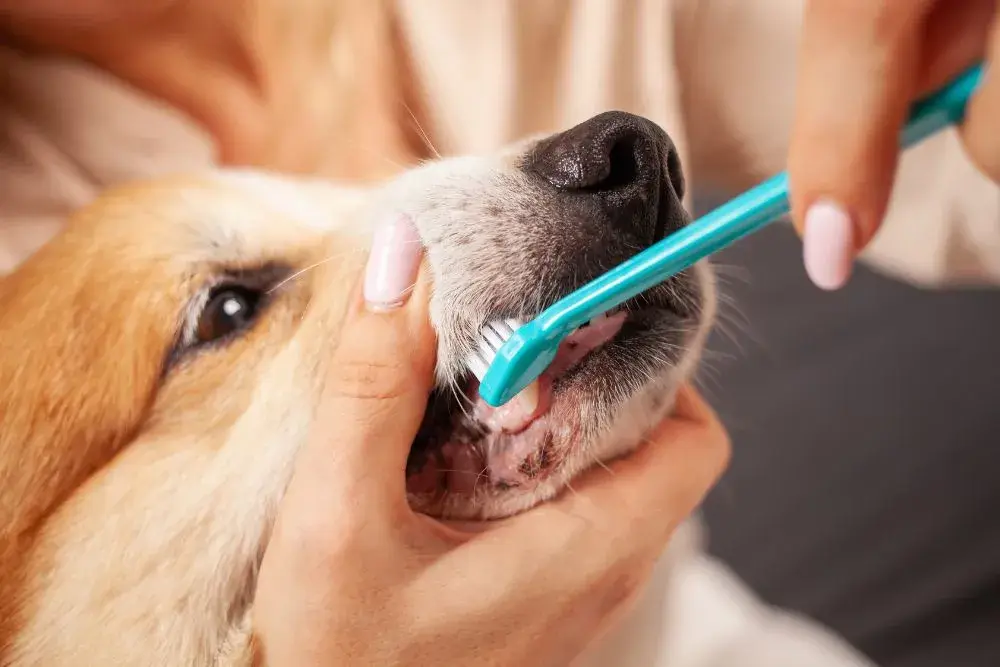For many pet owners, the task of brushing their dog’s teeth can be daunting. Maneuvering a toothbrush in your dog’s mouth, potentially meeting resistance or even a nip, can seem overwhelming. However, it’s vital to remember that oral hygiene is crucial for your pet’s health.
Dental care can prevent potential health issues such as periodontal disease, tooth loss, and more serious complications such as heart or kidney disease. Learning how to brush your dog’s teeth safely and properly, with the correct tools, a little patience, and the right techniques, will ensure positive results.
Choose the Right Tools
Investing in the right tools for the job is the first step. Dog toothbrushes usually have longer handles and angle differently to reach all areas of the mouth. Never use human toothpaste for your dog because they contain fluoride, xylitol, or other substances that can be toxic to dogs. Choose a dog-specific, flavored toothpaste. For dogs who are particularly resistant to toothbrushes, dental wipes can be a good alternative.
Get Your Dog Used to the Idea
Before starting regular brushing, it’s crucial to get your dog comfortable with the idea to prevent any problems and resistance. Start by gently massaging your dog’s mouth with your fingers, but don’t force it; this measure will allow them to get acquainted with the feeling. Gradually introduce the toothbrush and toothpaste. Remember, patience is key in this process.
Brush Regularly
Brushing your dog’s teeth shouldn’t be a one-time event. It needs to be a part of their regular grooming routine. Aim to brush your dog’s teeth daily or at least several times a week. This practice will prevent plaque, which is one of the main causes of a dog’s bad breath, from building up. Regular brushing can help prevent the build-up of plaque and tartar.
Use the Right Technique
Using the right brushing technique is critical to efficiently remove plaque and tartar without causing discomfort to your dog. Follow these steps to brush your dog’s teeth correctly.
- Positioning: Position your dog in a comfortable spot where you have good access to their mouth. If possible, do this in a quiet area to reduce distractions.
- Lift the lip: Gently lift your dog’s upper lip to expose the teeth and gums. Ensure you’re gentle to avoid startling or causing discomfort to your dog.
- Apply the toothpaste: Dab a little dog toothpaste on the brush—enough to cover the bristles. It may take you some tries before getting the right amount for your dog’s mouth.
- Brushing motion: Hold the toothbrush at a 45-degree angle to the teeth, aiming for the area where the tooth meets the gum line. Start from the back and work your way to the front, brushing in soft circular motions.
- Focus on the outer surfaces: The outer surfaces of the teeth usually accumulate the most tartar. Remember to brush the canine teeth and the large molars at the back.
- Reward your dog: Once the brushing session ends, reward your dog with praise, a petting session, or a dental-friendly treat. This practice will create a positive association and make future brushing sessions easier.
Below are some articles that’ll help you take better care of your dog.
- Newly Born Puppy Care
- Puppy Training Tips
- Common Health Disorders in Dogs
- Dog Grooming Tips for New Owners
- Can dogs Eat Rambutan?
Brushing your dog’s teeth may take some time and patience, but it’s an integral part of ensuring their overall health. By following these tips, you will greatly help maintain your dog’s dental hygiene effectively and safely.
